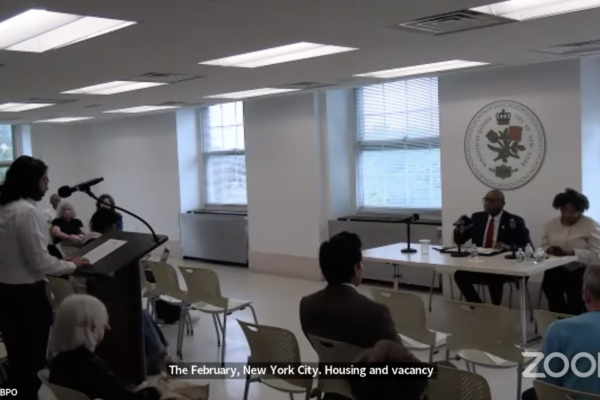On August 8th, New York City Queens Borough President Donovan Richards held a public hearing inviting representatives from the New York City Department of City Planning (DCP) to explain the specific measures of the “Housing Opportunity” land use plan for increasing housing in low-density communities.
During the meeting, DCP representative Veronica Brown introduced the three main aspects of the “Housing Opportunity” initiative. Firstly, in mixed-use low-density communities, new buildings can have 2 to 4 floors of residential units above commercial spaces. Secondly, new developments following transit-oriented guidelines could construct 3 to 5-story residential buildings on land exceeding 5,000 square feet, located near the ends of community streets or where the street width is over 75 feet. Thirdly, property owners of single-family and two-family homes are allowed to build accessory dwelling units (ADUs) in their backyards, convert garages, or basements into living spaces.
Furthermore, Brown pointed out that under the “Housing Opportunity” plan, developers in New York City are not mandated to provide off-street parking, as it would occupy land and increase construction costs.
However, the increase in residential buildings raises concerns about accommodating the influx of more residents and vehicles in low-density communities in the future.
Borough President Richards raised questions during the meeting about the lack of sewer infrastructure in low-density communities, enforcement of ADUs and basements by the NYC Department of Buildings, and the “Housing Opportunity” initiative’s flexibility in not requiring parking spaces for new developments.
The “Housing Opportunity” initiative is the final chapter of Mayor Eric Adams’ urban development project “City of Yes,” following the previous approvals of “Zero Carbon Emissions” and relaxing regulations for certain businesses within residential buildings.
According to the DCP, the “Housing Opportunity” plan will amend the citywide zoning text in New York City, allowing developers in low-density residential areas designated as R1 to R5 to build medium to high-density housing.
As the concept of “low-density” communities under the plan covers residential areas with up to five units, all 14 community districts in Queens will be impacted to varying degrees. Consequently, the initiative has faced strong opposition from many residents in Queens, including those living in the Jamaica Estates neighborhood, where former President Trump was born.
On the opposing side, members of the Common Sense Caucus, including Councilmembers Joann Ariola, Robert Holden, and Vickie Paladino, voiced their disagreement with the “Housing Opportunity” plan on August 8th.
Meanwhile, Samir Lavingia, the coordinator of the housing advocacy group “Open New Yorker,” expressed support for the “Housing Opportunity” initiative, citing its potential to address the current housing scarcity issue in New York City.
Among the five boroughs of New York City, only Queens has organized a public hearing for the “Housing Opportunity” initiative under the leadership of the Borough President’s office, where officials from the DCP, elected representatives, and residents share their viewpoints. To watch the replay of the “Housing Opportunity” public hearing hosted by the Queens Borough President’s office, visit: https://www.youtube.com/@queensbp

